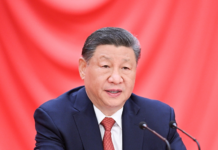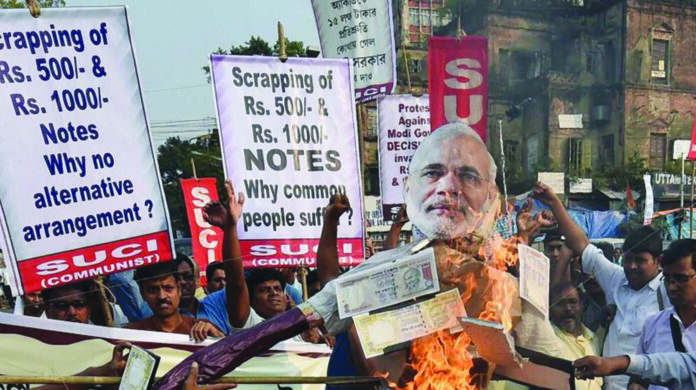The demonetization of currency undertaken by the Indian government in 2016 aimed to combat corruption and terrorism by targeting black money. However, the policy faced inherent challenges and failed to achieve its intended objectives. Furthermore, it raises questions about the government’s future strategies for curbing corruption and terrorism financing, particularly in light of the impending assessment by the Financial Action Task Force (FATF). On 8 November 2016, the Indian government announced the demonetization of 500- and 1000-rupee notes, constituting 86 percent of the currency in circulation.
While the initial announcement highlighted concerns about the use of counterfeit notes, other potential benefits such as expanding the tax base and promoting traceable transaction methods were not explicitly mentioned in the speech. The act of demonetizing currency, which targets existing holdings, has limited impact on curtailing the ongoing generation of undeclared income, which is more of a continuous issue. It was widely recognized that the majority of the actual black economy was rooted in sectors like real estate and gold, rather than in cash holdings.
The Modi government failed to adequately address this aspect, opting instead to focus solely on targeting currency reserves. The mismanagement and ineffectiveness of the entire endeavour became apparent due to the evident lack of preparedness displayed by the Reserve Bank of India, as evidenced by the issuance of multiple circulars following the initial notifications announcing the demonetization.
Between 9 November and 31 December 2016, RBI issued a total of 57 official circulars, continually revising the conditions governing public deposits, withdrawals, and exchanges of demonetized currency. The slow restocking of automatic teller machines with new cash, along with a flurry of revised notifications and the limited availability of new 500-rupee bills compared to the relative abundance of new 2,000-rupee bills, which were less practical for transactional purposes, indicated that RBI was ill-prepared to execute the policy effectively.
According to media reports, intricate money-laundering networks emerged following the demonetization, aiding affluent Indians in depositing substantial amounts of previously undisclosed currency while avoiding detection by tax authorities. These individuals sold old notes at a reduced price to brokers, who in turn enlisted low-income Indians to deposit or exchange them at banks. Many wealthy Indians turned to friends and relatives to help them funnel previously undeclared cash into the banking system, while others “advance paid” salaries for large numbers of workers.
During a press conference, former Indian Finance Minister, Arun Jaitley, acknowledged that black money had re-entered the banking system. He mentioned that tax authorities were scrutinizing individuals’ accounts to detect and levy taxes on this money. Additionally, he disclosed that investigations were underway for 1.8 million bank accounts showing cash inflows during the demonetization period that seemed inconsistent with their tax profiles. Furthermore, he highlighted the scrutiny of 200 “high-risk clusters” of individuals.
Moreover, a significant portion of India’s black money is invested in real estate, gold, jewellery and properties abroad. What concrete actions have been taken to address this aspect and eliminate such illicit investments? These questions are crucial, especially considering that the FATF team will assess the effectiveness of Indian financial institutions’ policies during the Mutual Evaluation process. The outcome of this evaluation will play a vital role in determining India’s compliance with international standards in combating terror financing and money laundering. Therefore, it is imperative for the Indian government to address these concerns and implement effective measures to combat financial crimes effectively.
According to RBI, over 99 percent of the demonetized currency was returned to it through commercial banks. Within a year of the demonetization, the currency in circulation in the economy had also returned to its pre-demonetization level. These findings indicate that the country’s demonetization effort failed to eliminate illicit cash transactions.
The failure of India’s massive demonetization effort has raised several concerns regarding its effectiveness in combating terrorism financing (TF) and money laundering (ML). Despite the demonetization, the Indian government is still investigating 1.8 million bank accounts and 200 individuals linked to unusual deposits during the demonetization period. The results of these investigations, including the number of accounts associated with ML and TF, remain uncertain, leaving doubts about the impact of the demonetization policy.
Furthermore, questions arise regarding the nature of these unusual deposits. Were they made by customers over counter, or were they facilitated through other means? If the latter, how many cases involved customers over counter? The relatively small number of 200 individuals raises concerns about justification for such a massive demonetization effort. Was low number a result of inadequate understanding or weak monitoring mechanisms?
Since the demonetization policy failed to achieve its intended objectives of curbing corruption and terrorism fueled by black money, there is a pressing need to reassess strategies. What alternative measures or ‘Plan B’ will be implemented to achieve these objectives, particularly in curbing terrorism financing? Demonetizing currency, while targeting existing stock, does little to prevent fresh creation of undeclared income or black money. What steps are being taken to hinder the ongoing generation of black money?
Moreover, a significant portion of India’s black money is invested in real estate, gold, jewellery and properties abroad. What concrete actions have been taken to address this aspect and eliminate such illicit investments? These questions are crucial, especially considering that the FATF team will assess the effectiveness of Indian financial institutions’ policies during the Mutual Evaluation process. The outcome of this evaluation will play a vital role in determining India’s compliance with international standards in combating terror financing and money laundering. Therefore, it is imperative for the Indian government to address these concerns and implement effective measures to combat financial crimes effectively.























